Halloween Spring Rolls w/ Squid Ink
These are really the exact same seafood and vegan spring rolls that I've been making. But it is Halloween! And I do have squid ink in my refrigerator. So, I couldn't help but turn this concoction into a festive themed dish. I've sautéed a couple of the Patagonian shrimp and tofu with peanut sauce and squid ink for the devilishly black hue for these Halloween-themed Squid Ink Spring Rolls.
Just make sure to wear black while making this dish! And to avoid clothes, cats, and carpets! Or really, just anything else that you don't want permanently dyed black. Because squid ink has a lot of color to it. You just need a few drops and then there is absolutely no going back! Everything that it touches will indefinitely change color and getting to the stain quickly enough is really the only recourse.
Gallery
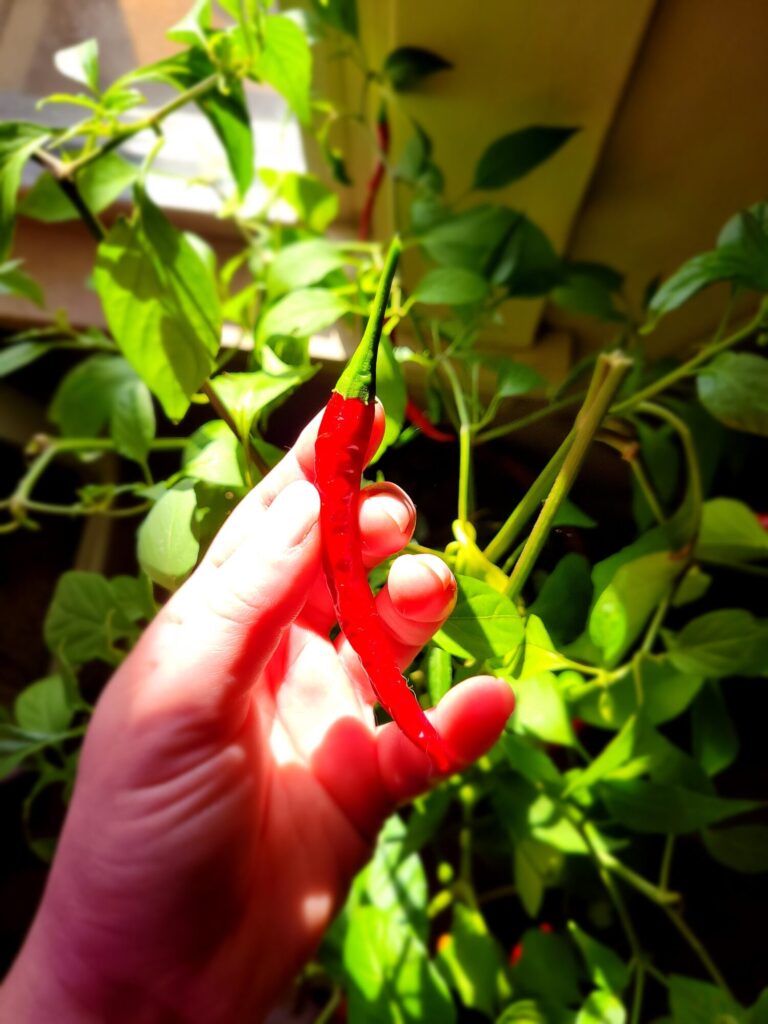



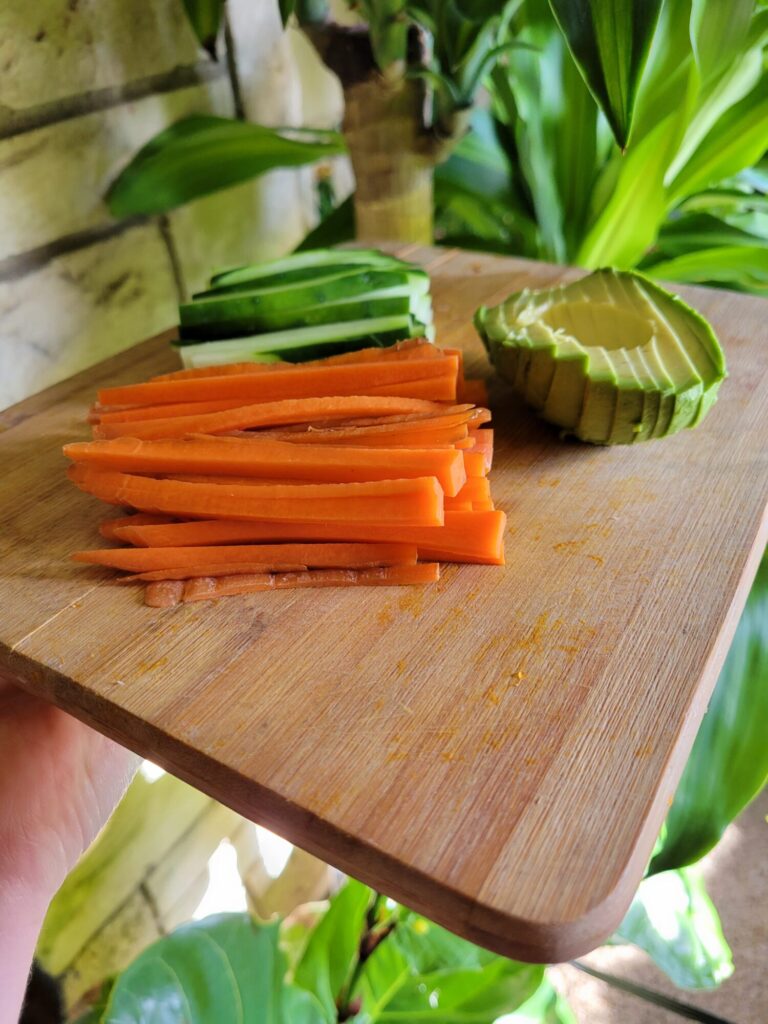


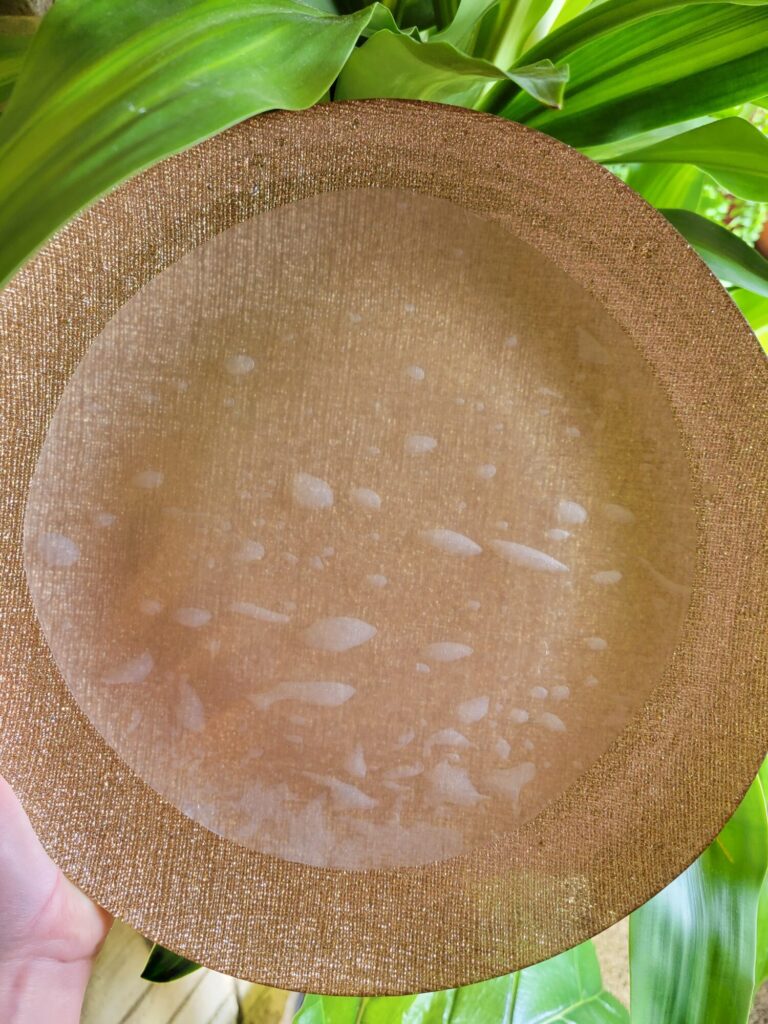
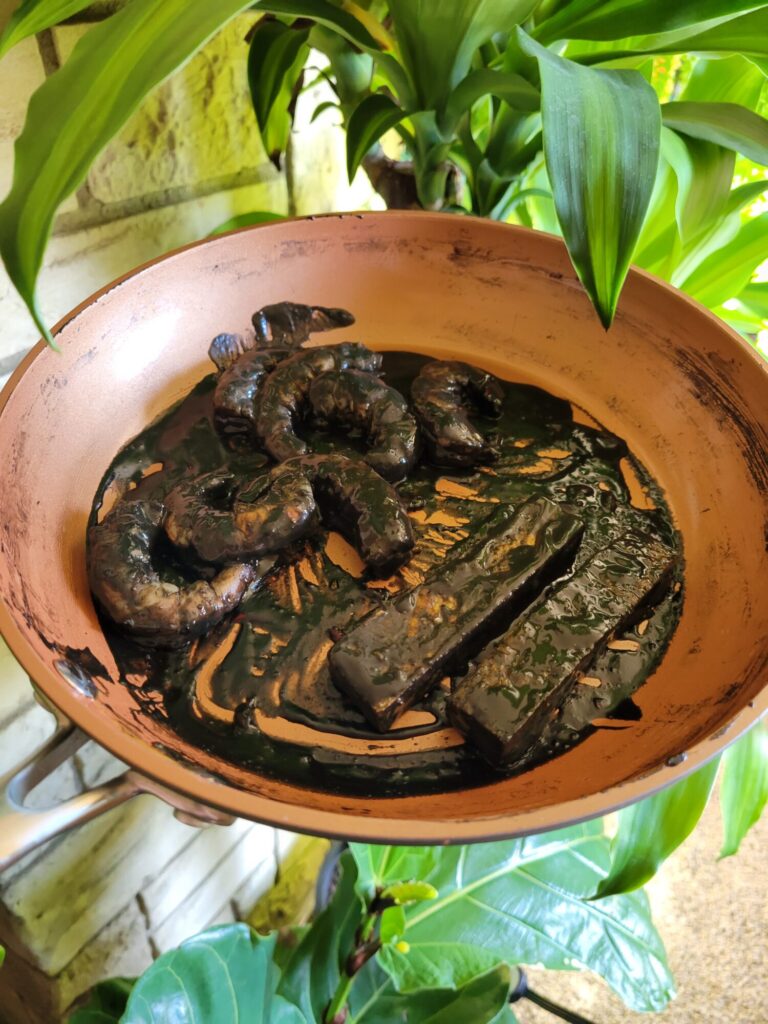

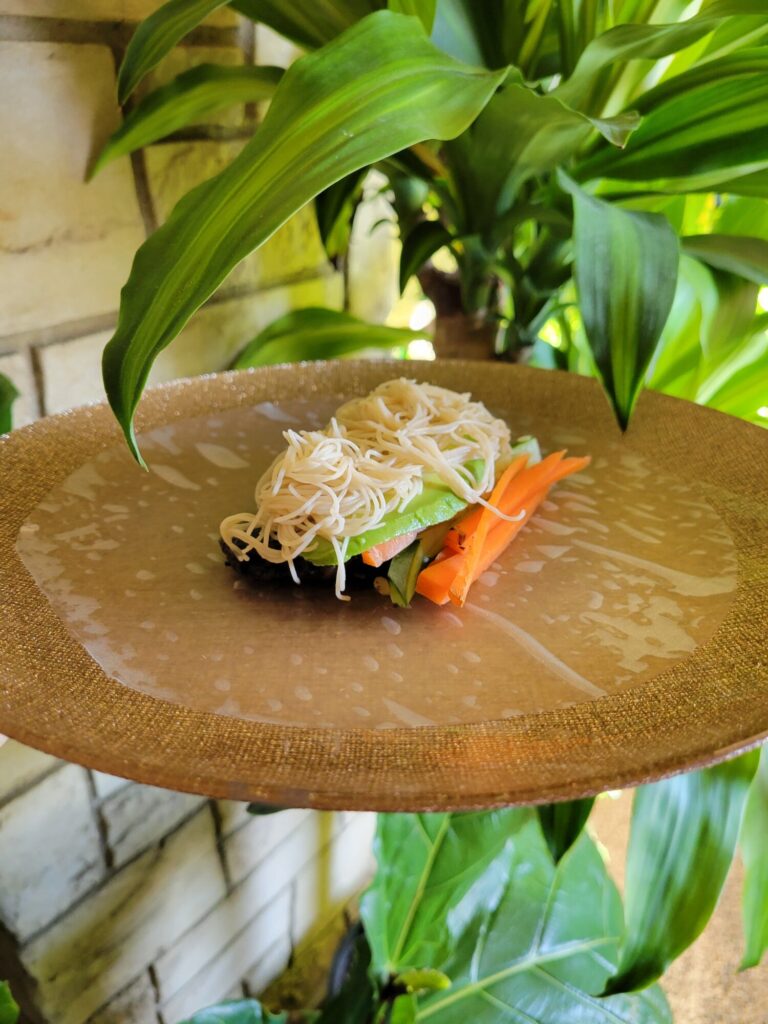
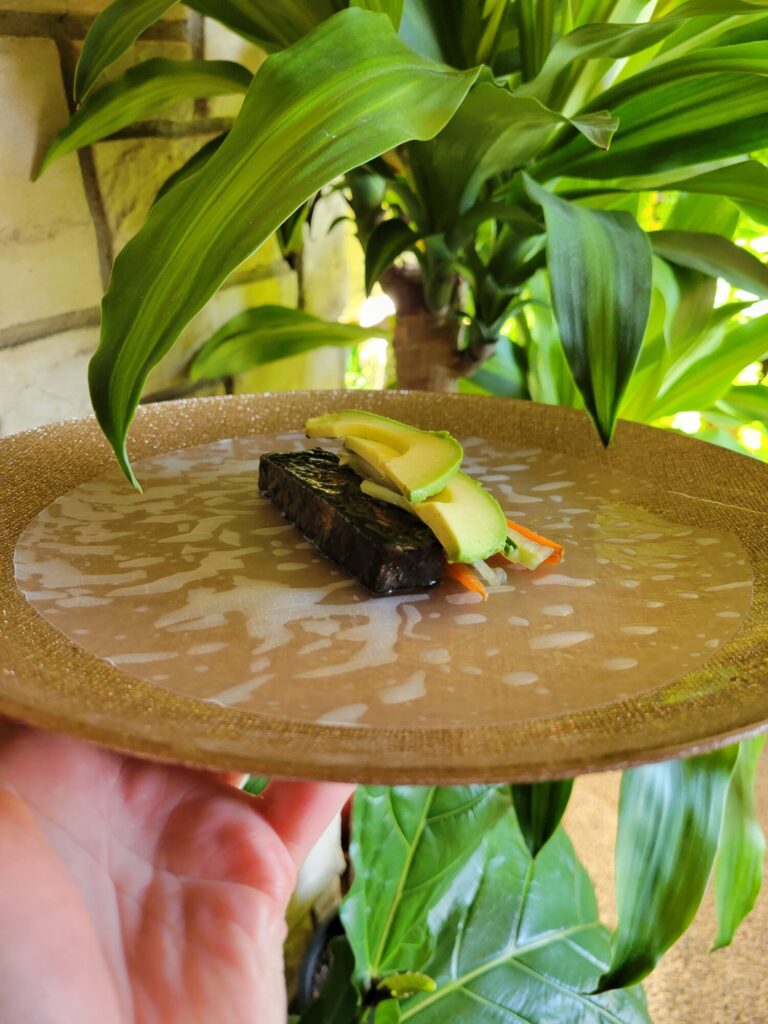

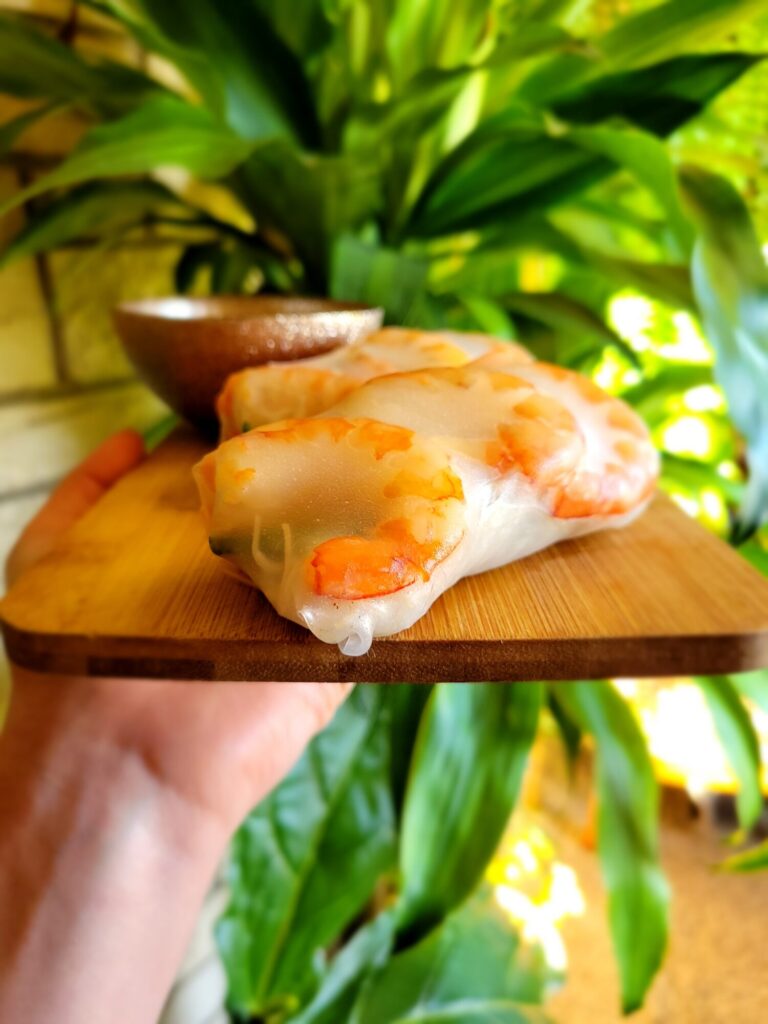

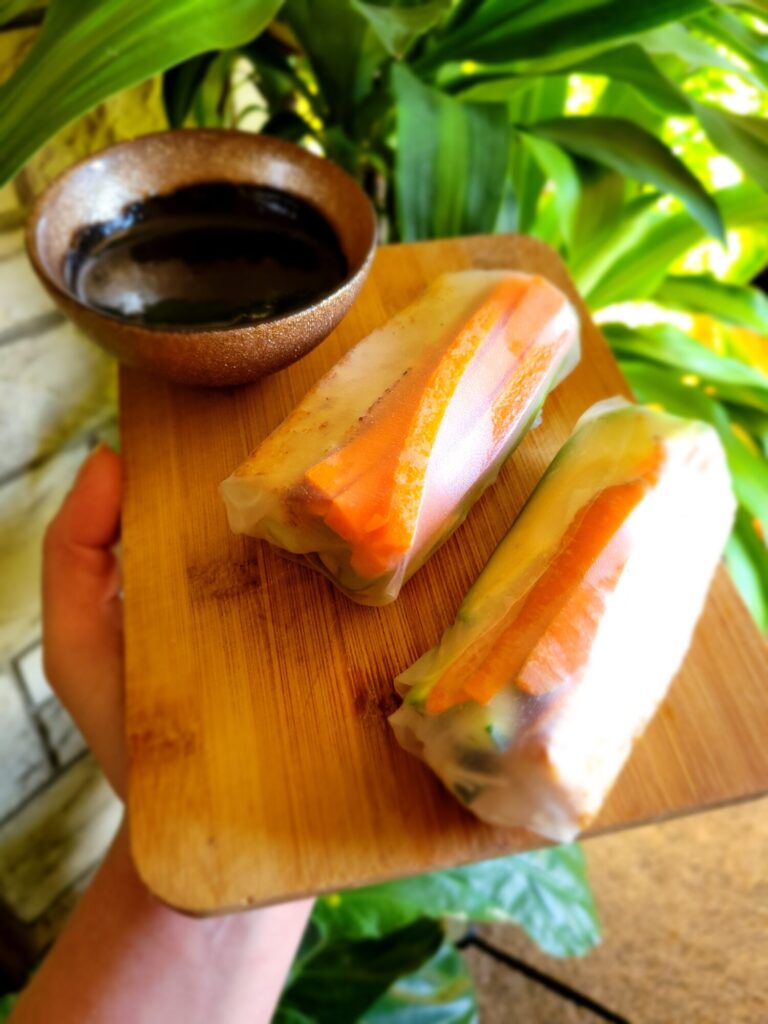

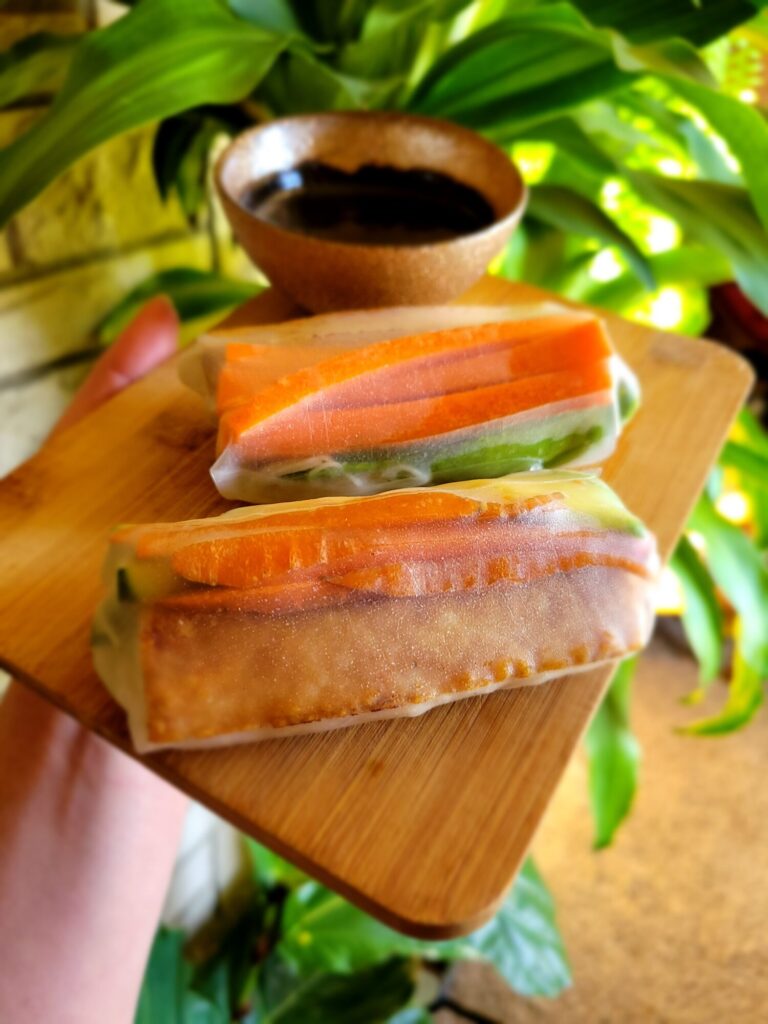

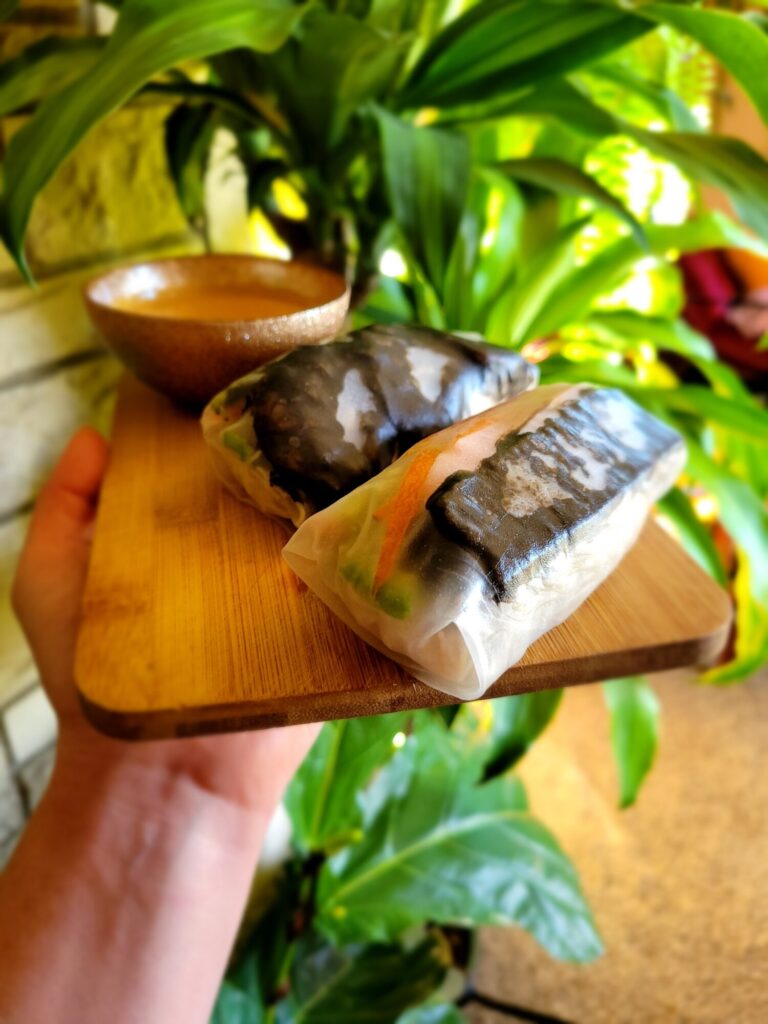


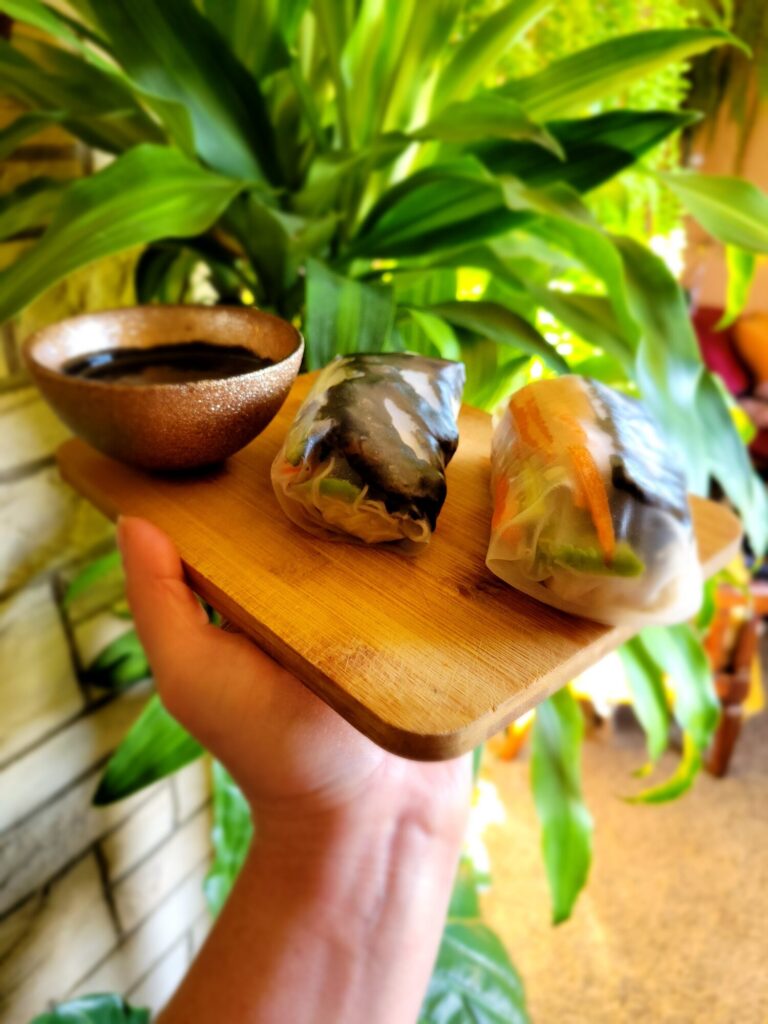

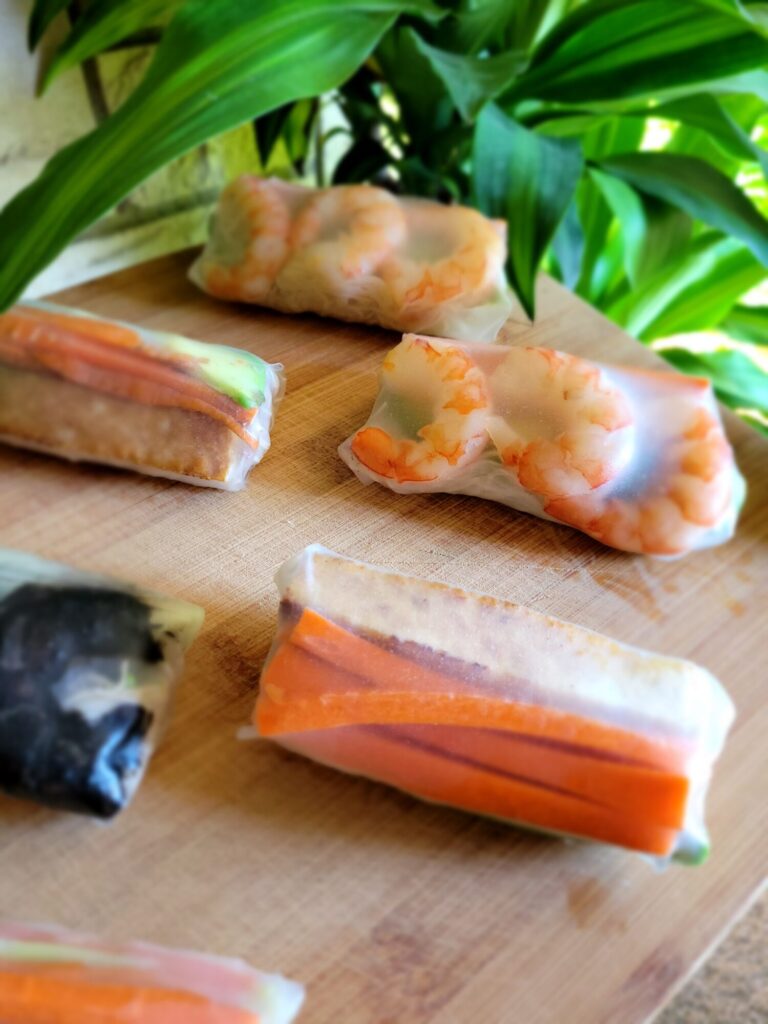


Variations of Squid Ink Spring Rolls
I keep a little jar of squid ink in the back of my refrigerator. It's one of those fun things that I'll bring out when I'm feeling up for the challenge of making something with a flair for the dramatic. And there is nothing quite so dramatic as entirely black foods! After all, fruits and vegetables come in absolutely every shape, size, and color. But even the darkest of black berries, plums, and potatoes still have a distinctly purple hue. So, when you come across something that's so starkly colored? It's incredibly fun. Although definitely reserved for seafood because of the nature of... well, squid!
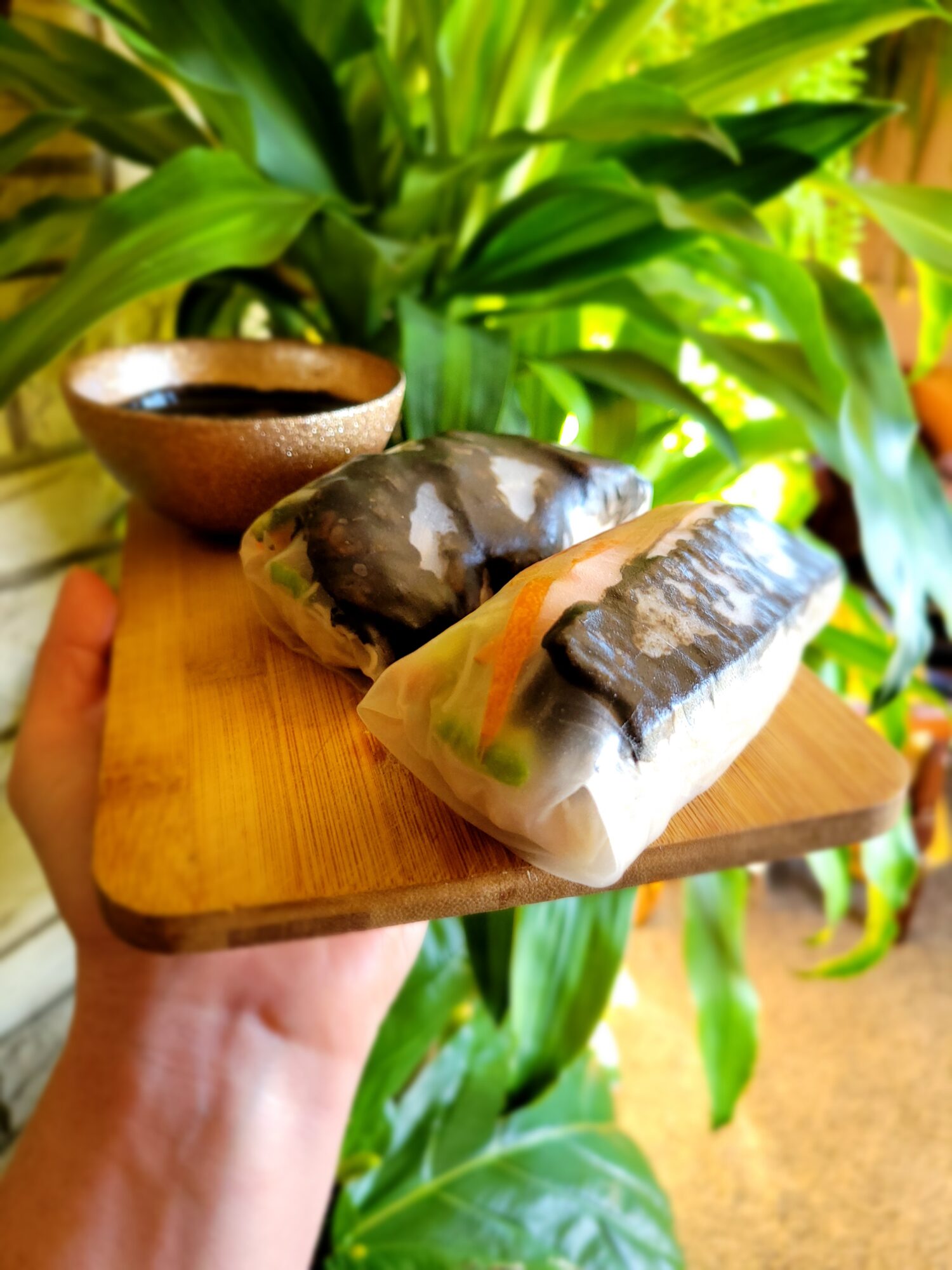
Halloween Spring Rolls w/ Squid Ink
Equipment
- Small Bowl
- Large Pot
- Skillet (preferably cast iron)
- Paper Towels
- 2 Large Plates
Ingredients
Peanut Sauce
- 1/3 c. peanut butter
- 1 tbsp. rice vinegar
- 3 tbsp. tamari or soy sauce
- 1/2 lime juiced
- 1 Thai chili minced
- 2 tbsp. water
Spring Rolls
- 1 c. vermicelli noodles
- 1/2 tbsp. high heat oil for cooking
- 1/2 tbsp. squid ink
- 8 oz. tofu and/or Patagonian shrimp fried
- 1/2 carrot thinly sliced
- 1/2 cucumber thinly sliced
- 1/2 avocado thinly sliced
- 6 rice paper sheets
- warm water for dampening rice paper
Instructions
Peanut Sauce
- Combine all of the ingredients for the peanut sauce in a bowl and mix until combined.If you don't have to have to finely mince the chilis, you can always put all of this in a food processor and pulse until puréed. This method also helps if you only have chunky peanut butter and still want a smoother consistency.
Cook Vermicelli
- Add about 3 inches of water to a large pot and bring to a boil over high heat.
- Cook vermicelli according to the manufacturer's instructions.Vermicelli cooks very quickly. I tend to add the vermicelli and then immediately remove it from heat. Then, go on to prepare the produce. Merely sitting in the once boiling water is sufficient enough soften it enough to eat without overcooking.
Fry Tofu
- While the pot is boiling for the vermicelli, drain the water out of the tofu and cut into cubes.
- Wrap in paper towels to absorb the moisture.It's important to absorb as much water out of the tofu as you can. Oil is less dense than water, so the molecules repel one another. With cold ingredients, this causes separation. When you're frying at high temperatures, though, this can cause boiling hot oil to spray back at you.
- Meanwhile, preheat the oil, squid ink, and about 2 tablespoons of the peanut sauce in a cast iron skillet over medium-high heat.
- When the skillet has preheated and the majority of the water has absorbed into the paper towels, carefully add the tofu to the skillet. Fry until golden brown. This should take about 2-4 minutes. Rotate until all sides are evenly fried and coated in the squid ink.
- Remove from heat and wrap again in paper towels to absorb the excess oil.
Fry Shrimp
- Preheat the oil, squid ink, and about 2 tablespoons of the peanut sauce in a skillet over medium-high heat.
- Remove the shell from the shrimp and add to the skillet. Turn in the oil and squid ink until completely coated.It doesn't take a lot of squid ink to get the black color! And it will absolutely dye everything from your cutting boards, countertops, clothes, carpets, and kitty paws black as well.
- Cook, turning occasionally, for 3-5 minutes, or until the shrimp is cooked.Shrimp is done when the meat reaches 135-140 degrees Fahrenheit. At this point the shell should be bright red and the inner meat should be white, not grey or translucent. The tails should also curl in to create a spiral.
Assemble Spring Rolls
- Add warm water to a large plate. Then, place one rice paper in and wet for 15-30 seconds, or until it becomes translucent and malleable.
- Move the rice paper to a dry plate or cutting board and place all of the filling ingredients into the center of the sheet.You want these fairly tightly packed in the center. Or alternatively slightly towards the back side. It should be rectangular in shape and fairly compact. Just make sure that they're not loosely lying around! You will need to compress them together to make the spring roll shape.It doesn't matter what order you put the toppings in. Although I started with the ingredients that I most wanted to be seen through the translucent rice paper. With the way that I ended up folding them, this was the most prominently visible part of the spring roll! And can be arranged in quite an artistic way if you want to get fancy with it.I didn't get that fancy, but started with the tofu or shrimp on the bottom, avocado next to it on the side, carrot and cucumber slices in the middle, and vermicelli on the top. The vermicelli was also the most pliable with no sharp edges, so this may have helped in wrapping the spring roll.
- Gently fold in both of the sides on the short ends.This is like folding an envelope in on the sides. The two ends aren't going to touch in the center, but they will keep the fillings from spilling out at what will become the top and bottom of the spring roll.
- Carefully pull one of the remaining long ends around the toppings.Pull tight enough for the fillings to compress into the spring roll shape. It's a similar process to making sushi rolls, where you want it to be as tightly round as possible, without tearing the rice paper.
- Then, roll the spring roll from that folded edge to the end of the rice sheet.In theory, this should make a spring roll! Although getting the correct tension to form a roll without it ripping did take a bit of practice and patience.Making a spring roll is kind of like trying to do origami with cling wrap. It sticks together immediately and you don't have a lot of wiggle room to start over! So, I would recommend having a few extra sheets of rice paper until you get the hang of it. Knowing how to wrap a tortilla definitely came in handy for me. But it still took a couple of tries to get a technique down!
Serve
- Serve immediately alongside the peanut dipping sauce.I played around with adding some of the squid ink to the dipping sauce as well. For the small serving bowl, I just added a couple of drops of squid ink. A little bit goes a long way here!
Tips, Tricks, & Notes
- For a more in-depth article on how to make peanut sauce, I have an entire recipe on Peanut Sauce w/ Tamari & Thai Chili.
- This recipe is gluten free as long as you use tamari, instead of soy sauce. And can be made vegan if you use tofu, instead of shrimp. I tend to call myself a mostly vegetarian person with pescatarian tendencies. So, I experimented with cooking both the tofu and shrimp for a taste of both varieties! Although you can absolutely pick one over the other or substitute your own fried element here. The main goal was just to dye something black with squid ink and feel festive during the Halloween season. So, do what works for you!
- The squid ink is also entirely optional. You might be able to find it at certain specialty grocery stores, but I ordered mine off of Amazon. "Squid ink" is also more of a colloquial term for what is almost always cuttlefish ink. I don't know why people do this. I guess that it makes it sound more cool? But most people don't know what you're talking about when you say "cuttlefish ink," so I've called it squid ink throughout this recipe. Just know that it's incredibly difficult to find true squid ink and most people actually prefer the taste of cuttlefish ink. Actual squid ink has a much more metallic taste that can be overwhelming. Cuttlefish ink, while still retaining a slight fishy taste, is often considered much more palatable.
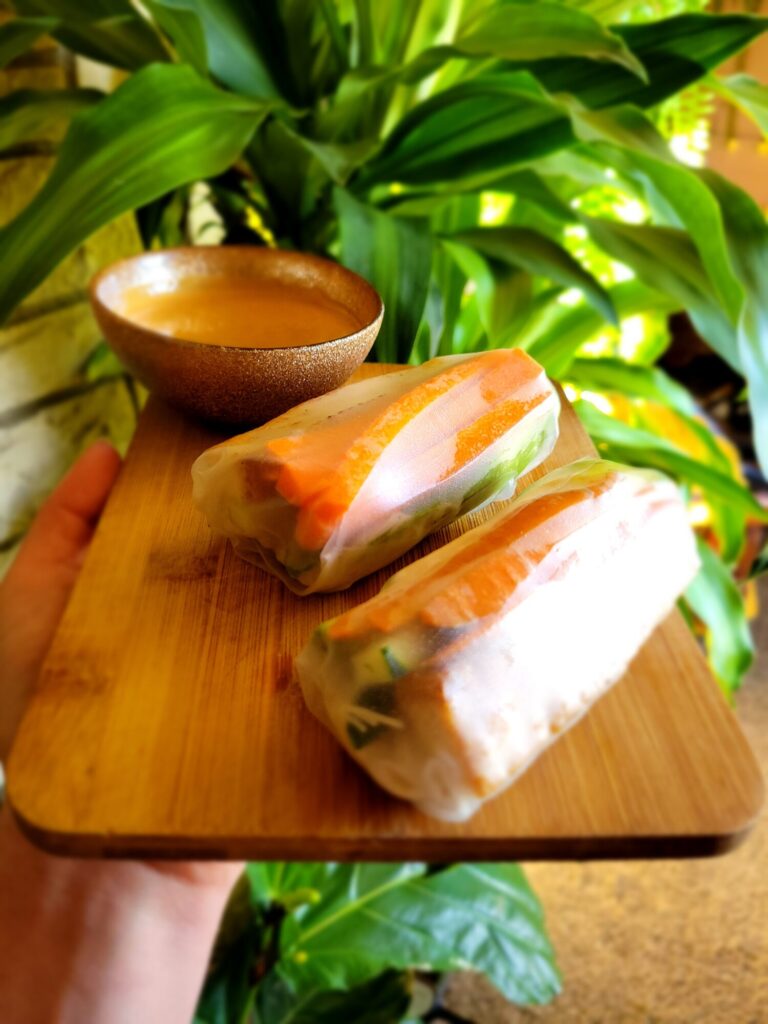
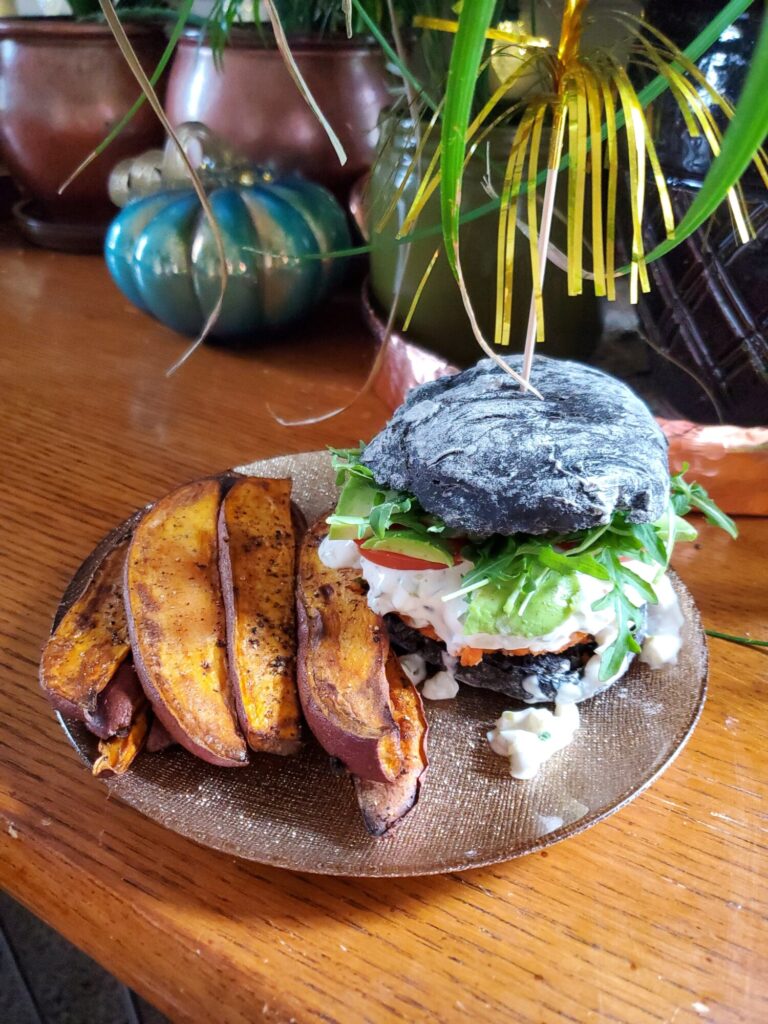

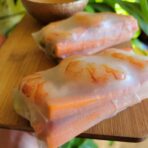
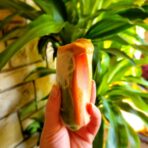

Leave a Reply